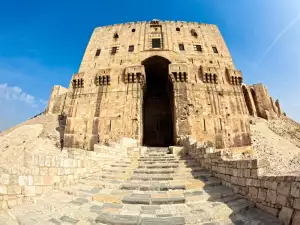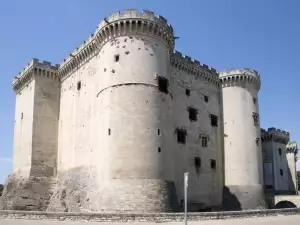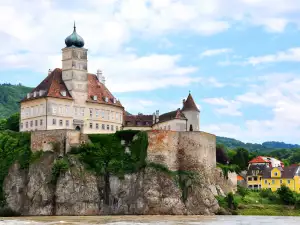Deva Citadel

Deva Citadel stands on a hill that overlooks the town of the same name. It is situated in Romania's Transylvania region in the Hunedoara county and from there crosses the river Mures. The Citadel was preceded by an ancient fortress named, Decidava. It is considered that the name originates from the ancient word Dava, which literally translates precisely as "Fortress."
Deva Citadel is located west of the town. The hill of which the citadel was erected, was formed by volcanic activity in the Neogene era which was approximately 10-6 million years ago. Today the hill fortress dominates the surrounding area with its height of 100-180 feet and was built in the 13th century.
Deva Citadel occupies a strategic place in the narrowing of the valley of the river Mures and entrance into the gorge of two mountains. In those medieval times the fort was one of the most powerful across Transylvania.
For the first time the citadel was mentioned in a document from 1269 with the Hungarian king Stephen. In 1453 the fortress was turned into a noble mansion and in the 16th century, local authorities decided that the citadel was too strategically important and therefore should not be of a noble family domain.
During the Turkish invasion in the region during 1550, 1552 and 1557, the citadel stays part of the Ottoman rulers. Suleiman the Great, however, returned it to the Hungarian Queen Isabella and her son, John Sigismund. In the 16th century the citadel served briefly as a prison.
In the 18th century the Deva Citadel was nearly destroyed but was restored in 1829 and used by the garrison of the border region. In 1844 part of the massive fortress of the citadel had been restored. In 1849 the Hungarians tried to outcast and settled down in the Austrian garrison. For this purpose they used dynamite and exploded part of the walls of the citadel.
Since then the whole remains are in ruins and can be seen today. From the massive former observation towers are only the basics.
Although sunken in ruins it is a popular place for walks and tourist visits within Transylvania. It has built two paths which start from the city park and reach to the fort. The very hill opens an enchanting view of the city of Deva, Mures River valley and nearby mountains.















